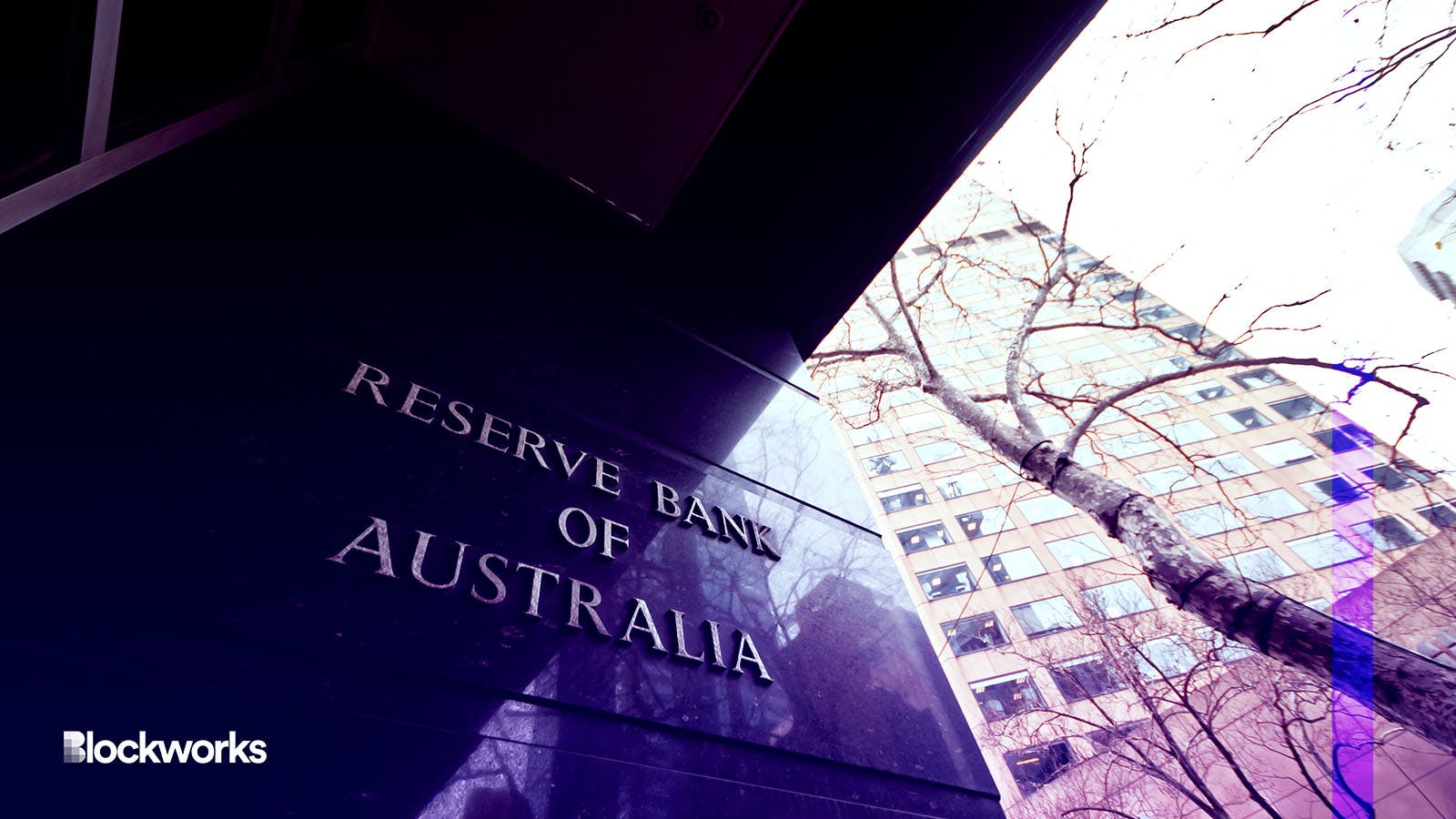Mastercard’s CBDC pilot ventures into Ethereum and NFTs
The project secured the needed pilot CBDC on the Reserve Bank of Australia’s platform and minted matching ‘wrapped’ tokens on Ethereum.

EyeofPaul/Shutterstock, modified by Blockworks
Mastercard in conjunction with the Reserve Bank of Australia and the Digital Finance Cooperative Research Centre, revealed Thursday the latest results of their CBDC pilot project.
Notably, the pilot included a live transaction where an NFT was purchased on the Ethereum blockchain using a “wrapped” version of the CBDC, according to a statement.
Jointly developed with financial services company Cuscal and blockchain platform Mintable as part of the bank and cooperative’s research project, the tech is designed to make CBDCs interoperable across various chains.
The pilot, which places a real legal claim on the RBA, involved selected industry participants and demonstrated how a CBDC could provide payment and settlement services to Australian households and businesses.
“Mastercard has seen demand from consumers to participate in commerce across multiple blockchains, including public blockchains,” Richard Warmold, the company’s Division President of Australasia said.
“This technology not only has the potential to drive more consumer choice, but it also unlocks new opportunities for collaboration between the public and private networks to drive genuine impact in the digital currency space.”
During the live test, Ethereum wallets of both the buyer and seller were ‘allow-listed,’ demonstrating the tech’s capacity to enforce controls on public blockchains.
Securing the necessary quantity of the pilot CBDC on the RBA’s dedicated platform, the project then generated a corresponding amount of wrapped pilot CBDC tokens on Ethereum.
Authorization protocols are strict. The pilot CBDC can only be held, used and redeemed by authorized parties who have cleared Know Your Customer verifications and have been risk-assessed by licensed service providers.
The project is part of a broader strategy under Mastercard’s wider Multi-Token Network (MTN) initiative, launched in June 2023, that aims to act as a “testbed for developing live pilot applications and use cases with financial institutions, fintechs and central banks,” Blockworks previously reported.
It aligns with Mastercard’s ambition to leverage blockchain tech across an array of payment use cases to facilitate what the company is touting as the mainstream adoption of digital currencies.
Get the news in your inbox. Explore Blockworks newsletters:
- The Breakdown: Decoding crypto and the markets. Daily.
- 0xResearch: Alpha in your inbox. Think like an analyst.






